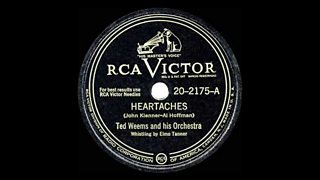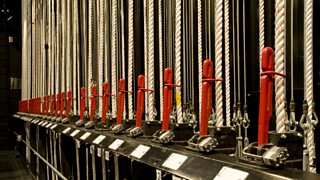Pucker up: top ten practical uses for... whistling
For many, the sound of whistling is an irritation, but for others it's far more significant, as revealed in Radio 4’s Out of the Ordinary – Whistling: at the Masters of Musical Whistling Festival in Los Angeles, the organisers and participants view it as an undervalued art form. We’ve compiled ten common (and not so common) uses of whistling in order to ascertain its cultural importance.
1. As a principal musical instrument
One of a handful of undoubtedly talented whistlers practising their art on the concert circuit, Dutchman Geert Chatrou (see video below) came to prominence when he won the International Whistlers Convention in 2004. A serious musician, he performs internationally as a professional whistler with classical orchestras and some jazz ensembles, and indisputably produces beautiful and profound music from his lips.
2. In popular music
In the "Big Band" swing era of the 1930s and 40s, whistlers such as Elmo Tanner became famous as featured instrumentalists. Tanner even had a chart topping hit with “Heartaches” (with the Ted Weems Orchestra) in 1947 after a disc jockey in Charlotte, North Carolina played an old and obscure recording of the song randomly on his show, spurring an unprecedented surge of requests for it to be made available again.

"Puccalo" is a term used to describe “the highest level of human oral mouth whistling": practitioners of puccalo have appeared in jazz bands, on pop records, in advertising, and in films. In vaudeville and music hall they were often known as "siffleurs".
3. As a form of busking
Mark Campbell was one of London’s most famous and widely-recognised buskers until his death in 2017. Blind from birth, he was known as the "whistling busker"; for 20 years he travelled from his home in Wolverhampton several times a week to perform on London’s underground network as part of Transport for London's busking scheme, and was described as a “hero on the Tube”.
You can watch a three-minute documentary about Mark (YouTube).
4. As a form of communication in theatres
From the 1600s onwards theatres began using mechanisms to "fly" props and scenery, and a whistling code among flymen became the cue for raising and lowering scenery during productions. As rigging scenery was a similar task to rigging sails, it was most likely inherited from whistling cues used by sailors, as many gravitated from the high seas to work on dry land in the popular theatres of the time. The danger of something falling unexpectedly on your head in response to a misplaced cue is why it is still regarded as unlucky to whistle in a theatre.

5. As a means of training animals
In a similar fashion whistling codes have been traditionally used as a non-linguistic means of communicating with animals. The most well known example of whistled commands is the set used to train sheep dogs.
6. As a language in itself
Whistled languages differ from those used to communicate with animals by herders as they are far more complex, and are used as an actual substitute for speech, rather than as basic signals or code, and are often based on actual languages such as French or Spanish. They fall into two main categories based on tone or articulation, and have been found in a surprising number of places across the world including the Amazonian jungle (The Piraha Tribe), Africa, Asia, Turkey, France (The Pyrenees), and Spain (The Canary Islands), and some are still in use today.
Interestingly, psychologist Onur Güntürkün when studying the spoken and whistled language of the Turkish villagers of Kuşköy discovered that whistled language is processed by both the left and right hand parts of the brain, whereas spoken language is usually the realm of the left hand hemisphere only, which deals with speech, while the right processes music. "This hasn’t been observed in any other form of speech," he observed.
7. As a covert signal within the gay community
In the last century gay men and women employed whistling as part of a set of signals to identify each other. Michael Wilcox, in his book Benjamin Britten’s Operas points out the allusions to homosexuality written into the opera Albert Herring by Britten: "...jangling keys, or in this case, the shop bell, whistling and Swan Vestas matches, [were] all used in wartime homosexual circles as part of the ritual of making contact."

8. In spectator sports
In Europe and South America whistling is usually a sign of displeasure with the team’s performance. In the U.S.A. however it is often used to encourage and applaud athletes.
9. As a way to pass time at work
The classic whistling milkman/postman/construction worker is by all accounts becoming a thing of the past. Studies have shown that people whistle less and less at work now, perhaps due to listening to personal music devices or because some of the aspects of these jobs, or the jobs themselves, are disappearing. Even as a soothing way to ease stress and boredom outside work, it was once a mainstay. Sadly (to some), this is no longer the case.
10. To catch someone’s attention
Perhaps the most irritating of all types of whistling (especially wolf whistles – now generally outlawed due to their sexist and intimidating nature), whistles used to gain attention are still in use universally. Generally considered seriously annoying, hearing a high pitched and abrasive whistle is about as far from artistic endeavour as you can get, and inevitably directed at someone else (never you). With that in mind, it is possible to glean some understanding of why whistling fanatics often find it hard to garner support for their cause!

